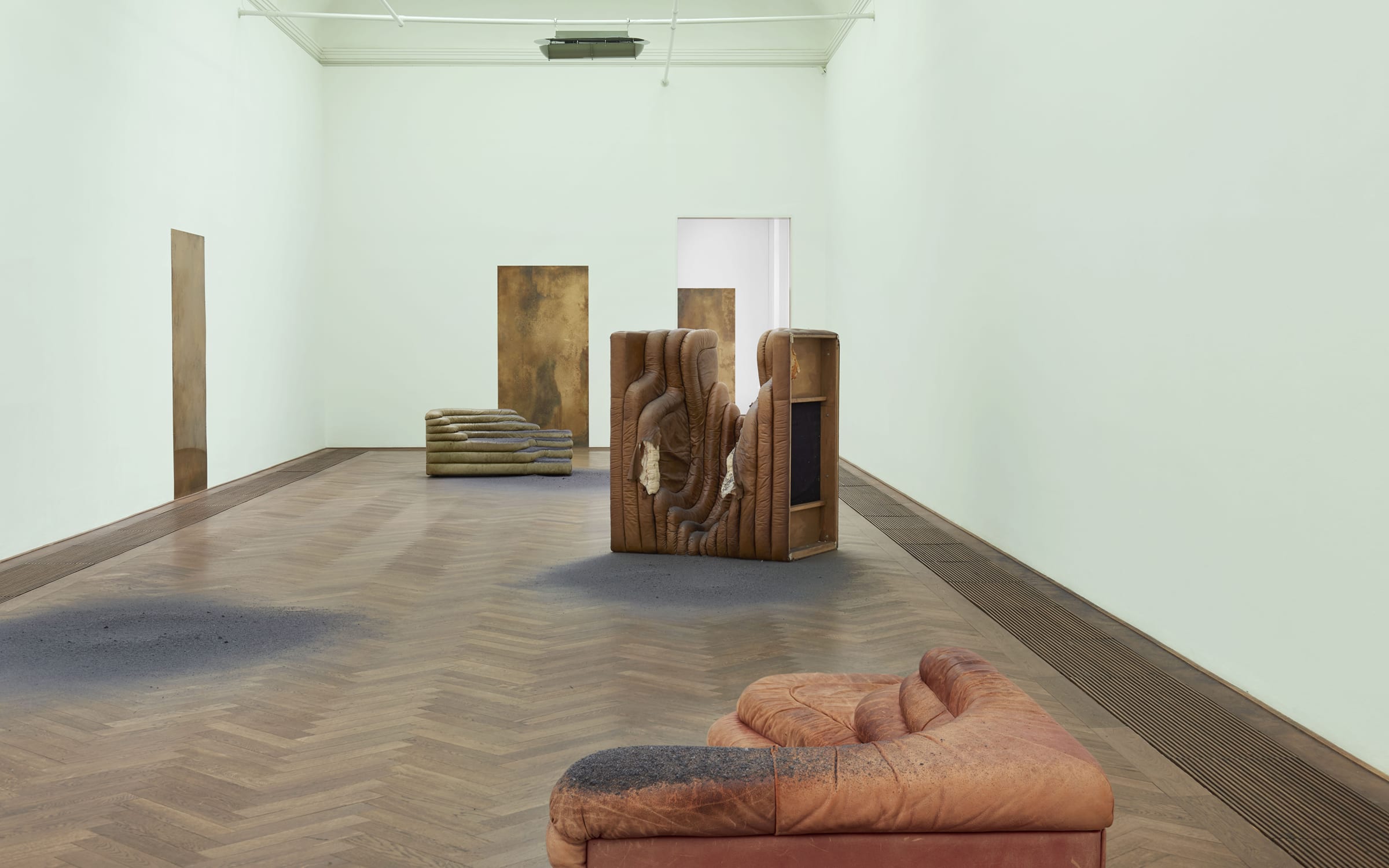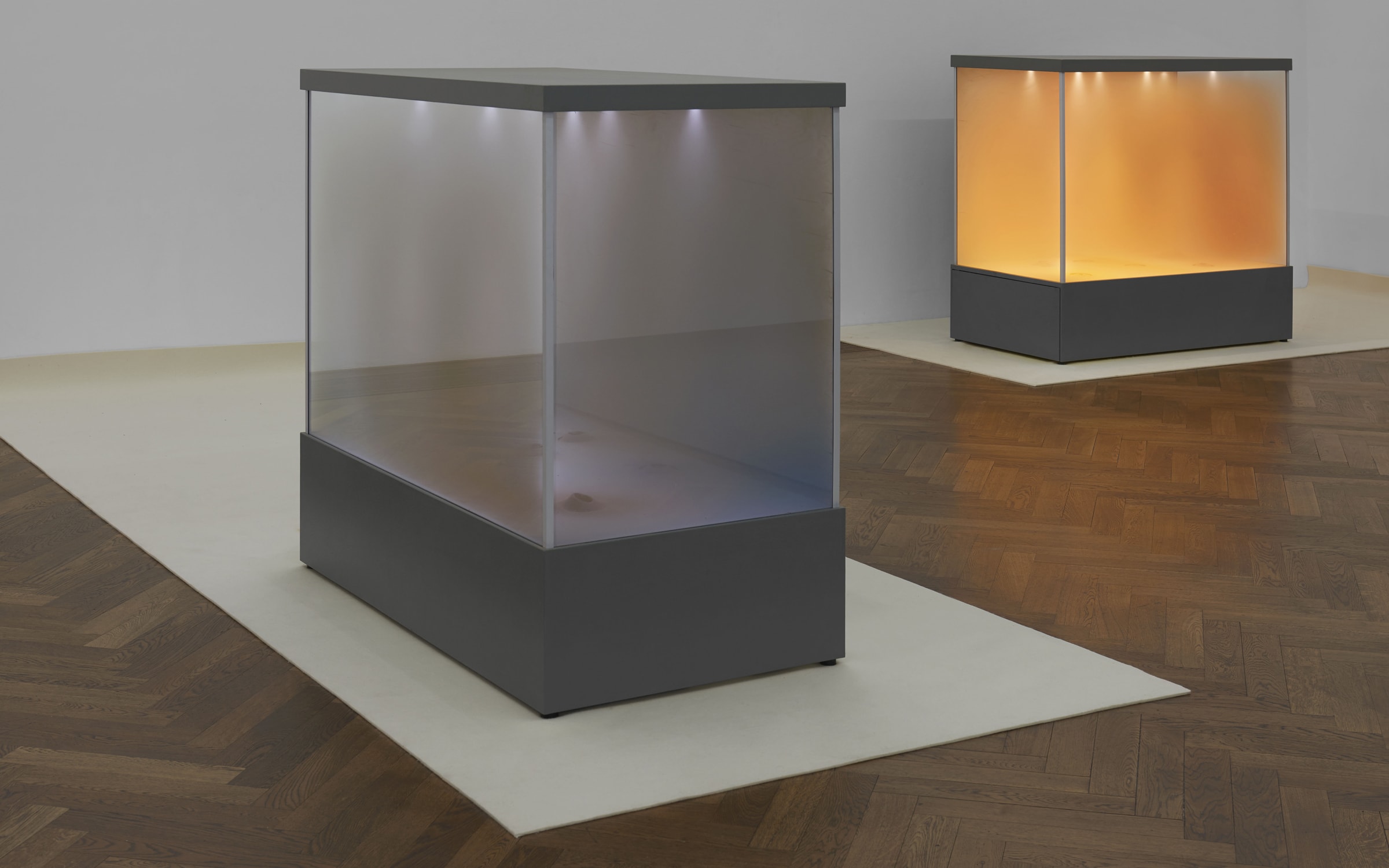At Kunsthalle Basel, Dora Budor captures the ghosts of J.M.W. Turner and the city's music hall
Elise Lammer caught up with the Croatian artist as she opened her first major European show
Log in and subscribe to receive Art Basel Stories directly in your inbox.
In ‘I am Gong’, her new exhibition at Kunsthalle Basel (until August 11), the Croatian-born, New York-based artist Dora Budor has created a system of references that spreads through all five rooms of the gallery, connecting the show to the nearby Musiksaal (concert hall), which dates from the 19th century and is currently undergoing renovation. The exhibition is devised according to internal and external parameters, including the acoustic impact of the construction work coming from the Musiksaal, with the noise providing a live score. Inside, visitor movements and elements taken from the artist’s research into the history of the Kunsthalle’s building further shape the exhibition. Hinting at cinema and science fiction, Budor’s work often designs synergetic relationships between organic, inorganic, human, and non-human elements, ensuring each visitor has a unique experience inside her immersive installations.
Elise Lammer: When entering ‘I am Gong’, I was immediately struck by the sound. Without being overpowering, it is everywhere, as if the Kunsthalle were breathing. Yet there aren’t any devices betraying this odd presence. Where does it come from?
Dora Budor: Kunsthalle Basel has empty cavities that are a result of its 2004 modernization – closed-off spaces and gutted hollows in the walls, ceilings, and floors. These are inhabited by The Sound-Sweep [2019], a modulating soundscape that emerges from the building. It’s directed by Tuning (Well, It’s a Vertebrate...) [2019], the recording device I installed inside the Musiksaal, which functions as a resonating yet invisible umbilical cord between that building and Kunsthalle Basel. It transmits construction noises – drilling, arguments, and continuous rattling – turning them into an abstract heartbeat, or a pulsation, that in turn activates parts of the installation in the Kunsthalle. Because the Musiksaal will be undergoing renovation until 2020, all we can see is the facade, draped in construction sheets. The dysfunctional concert hall remains a fiction of sorts, but it’s coming into being serves as a motor for the exhibition.
EL: How does this translation process work?
DB: I worked with a sound engineer and collaborated with the LA-based composer Celia Hollander. She developed the soundscape as an evolving, malleable sequence of atmospheric sound that is influenced, in part, by the signals it receives. The initial analogue, organic sound recordings were processed and synthesized to become something I think of as genetically coded sound.

EL: The piles of ash we see accumulating on the floor of the first room and on the four vintage de Sede sofas in that room are from The Year without a Summer (Klug’s Field) [2019]. I understand these elements as three-dimensional, durational, and accumulative translations of a process. In your work, wear seems to be used as an alternative clock, and provides a way of engaging with time on a personal but also abstract scale.

EL: The three vitrines of Origin I (A Stag Drinking) [2019], Origin II (Burning of the Houses) [2019], and Origin III (Snow Storm) [2019] also show landscapes of accumulation that are triggered by the activities of the Musiksaal. They remind me of 19th-century dioramas, the typical displays found in natural science museums that, back then, proposed a revolutionary way to freeze the course of time.
DB: These pieces employ the technology of the environmental test chambers used in factories to test and accelerate the effects of time and weather on manufactured objects. They show eruptions of pigments and soils, creating ephemeral, atmospheric scenarios that evolve throughout the time of the exhibition as piles of residue accumulate. Their colors are familiar since I modeled them on J.M.W. Turner’s The Lake, Petworth: Sunset, a Stag Drinking [c.1829], Snow Storm – Steam-Boat off a Harbour’s Mouth [1842], and The Burning of the Houses of Parliament [c.1834–5]. Like glimpses of past weather, they tell us about volcanic and industrial particles in the air, and dust in the atmosphere, at a time that correlates with when Kunsthalle Basel was built.
I’m interested in Turner’s studio practice. In his book
Weather Architecture, Jonathan Hill describes how Turner’s visitors were shocked to discover that he would put some of his unfinished paintings in the back room of his damp and unheated studio, where rain and snow could fall through the broken skylight. They thought he had gone mad, while he just was letting the actual weather conditions find their way into the images, rendering not only representations of this historical time, but unique markers of time and space.
Dora Budor was in conversation with Beatriz Colomina, Jacques Herzog, and Hans Ulrich Obrist on June 14 as part of Art Basel’s Conversations series. Watch the full talk here.
‘I am Gong’ is on view at Kunsthalle Basel until August 11.
Elise Lammer is a curator at SALTS in Birsfelden and a lecturer at Institut Kunst-FHNW, Basel.Top image: Dora Budor, The Preserving Machine (detail), 2018-19. Installation view at Kunsthalle Basel, 2019. Photo by Philipp Hänger / Kunsthalle Basel.

